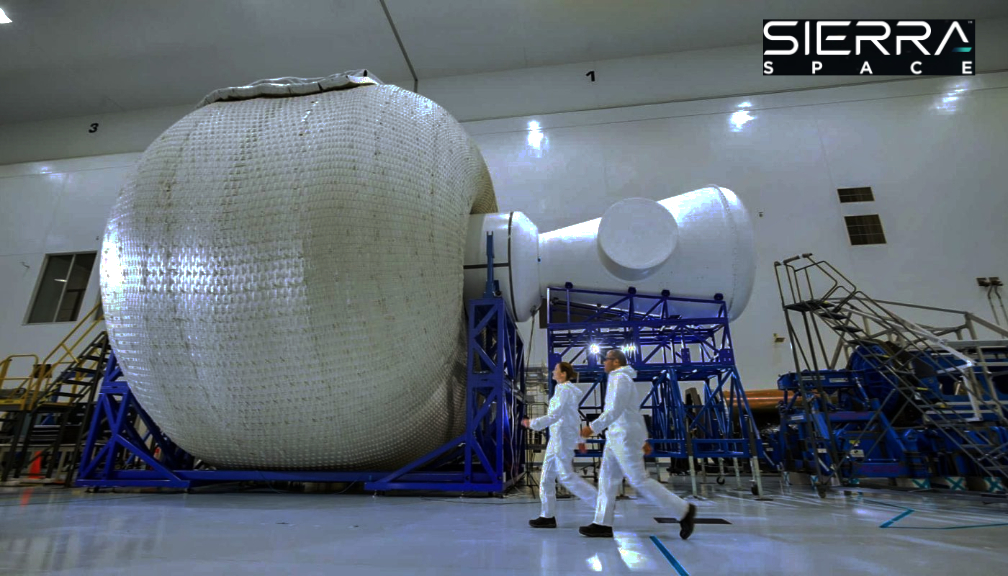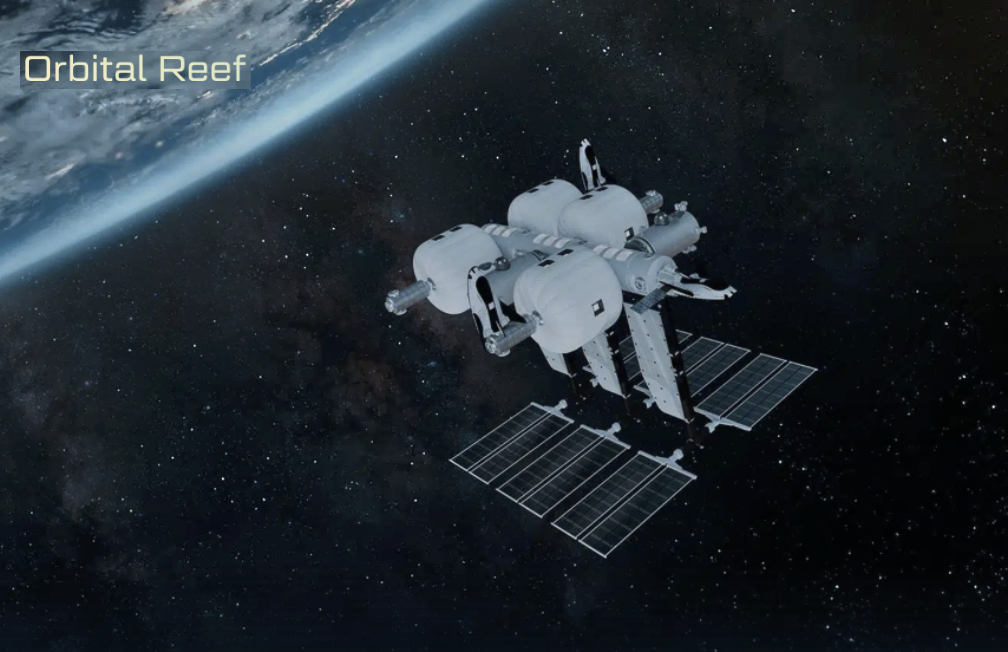
Sierra Space is on the brink of a historic moment as the company prepares for its biggest-ever “burst test” of Sierra Space’s inflatable, expandable space station technology.
This groundbreaking endeavor marks a critical step in Sierra Space’s co-development of Orbital Reef with Blue Origin, as the company plans to stress test – for the first time in history – a full-scale version of its LIFE™ habitat structure and bring the unit to failure under pressure.

LIFE™ is constructed of high-strength “softgoods” materials, which are sewn and woven fabrics – primarily Vectran – that become rigid structures when pressurized on orbit. To date, Sierra Space has conducted five stress tests on subscale test articles; this next one will be 18x larger – nearly 300 m³ of pressurized volume.

Sierra Space’s expandable space station module technology is highly scalable and flexible to all existing and planned launch vehicle fairing sizes. The softgoods structures launch packed inside conventional rocket fairings – 5m, 7m, 9m and beyond – inflating to capacity on orbit. Low-volume launches become high-volume space stations. The module volume will always be the square of its expansion diameter. For example, with a 2.5x expandable configuration, the volume would be 6.25x of a rocket fairing.
“Sierra Space’s inflatable space station module technology offers the absolute largest in-space pressured volume, the best unit economics per on-orbit volume and lowest launch and total operating costs. Having the best unit economics positions Sierra Space as the category leader in microgravity research and product development – providing customers with the most attractive return on their investment.” — Tom Vice, CEO, Sierra Space
Key Dimensions:
- Full scale LIFE habitat with a height of 20.5 feet (Total height with ground support equipment: 29.5 feet)
- Diameter: 27 feet
- Volume: 10,000 cubic feet (283.17 m3)
Current Progress:
- All components and ground support equipment are in the integration phase at NASA Marshall Space Flight Center
Upcoming Steps:
- Softgoods integration into the test stand will be followed by transportation, utilizing the legendary NASA KAMAG transporter tractor, to the historic testing location adjacent to the flame trench of the Saturn 1/1B test stand — where NASA tested rockets for the Apollo program
- Setup and calibration of sensors and cameras, alongside operational run-throughs, will prepare for the full-scale UBP test in December 2023
Objectives and Lessons Learned:
- The recent successes of subscale burst tests have emboldened Sierra Space to undertake the full-scale burst test with confidence
- Sierra Space aims to further refine its technical approach to safety factors and structural integrity through this test
- Insights from previous tests contribute to technical maturation in support of higher-fidelity manufacturing processes
Core Materials and Blanking Plates:
- The restraint layer for LIFE is constructed of high-strength “softgoods” materials, which are sewn and woven fabrics – primarily Vectran – that become rigid structures when pressurized
- Under normal operating pressure, the Vectran softgoods materials become 5x stronger than steel, exceeding station lifetime performance safety factors
- The restraint layer is complemented by a bladder allowing controlled inflation and pressurization to ultimate burst pressure test failure
- Two metallic blanking plates are strategically inserted into the restraint layer, designed for seamless integration into the structural shell with minimal performance degradation or knockdown; blanking plates are metal placeholders for integrating windows, airlocks, robotic arms and other features, into the softgoods layer
